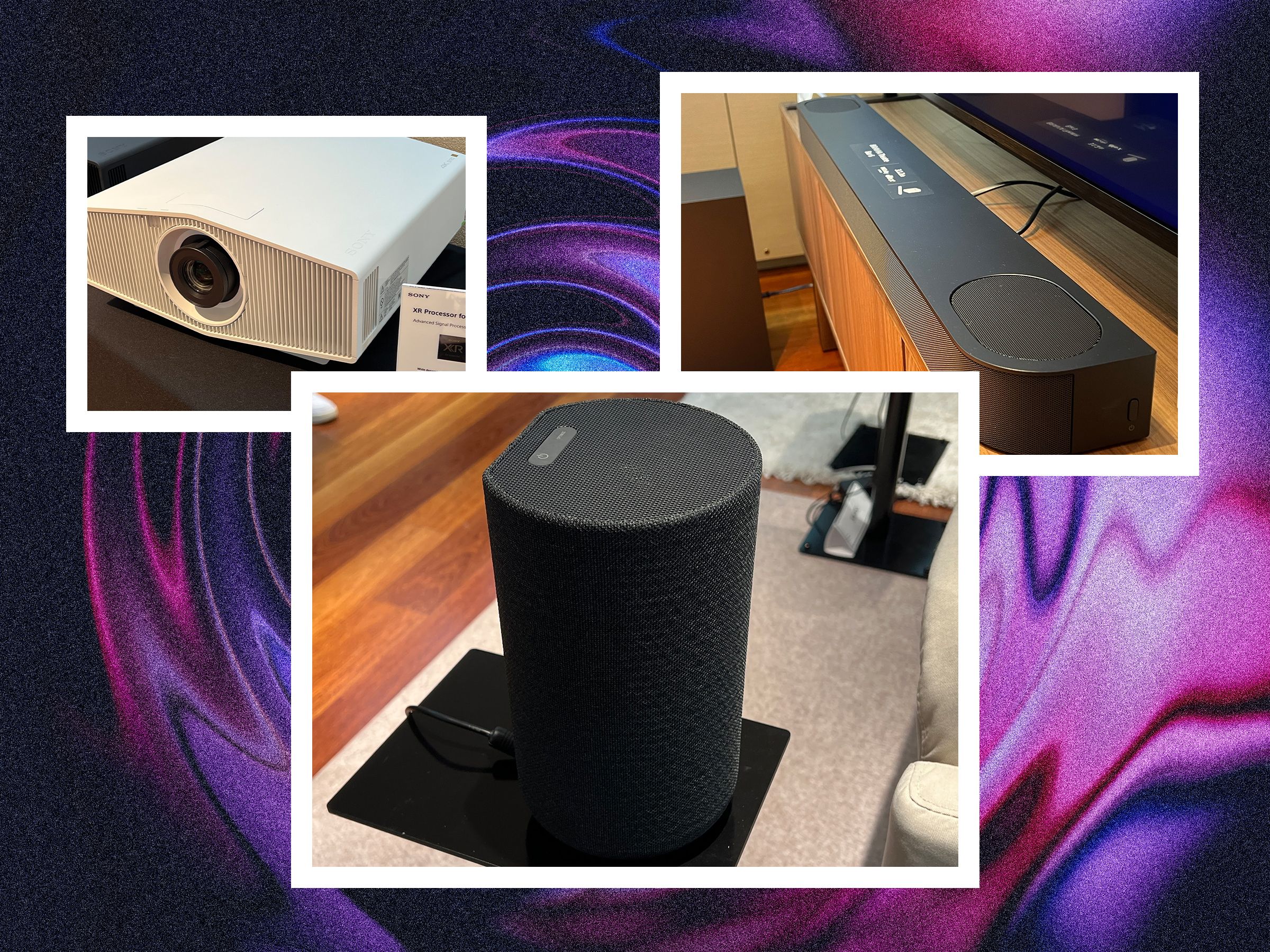Sony’s glittering new RGB LED display made a big splash last month, and as one of the few to see it in the flesh, I can attest that it’s a very exciting new advancement. It’s also still deep in the prototype stage, so it’ll be a while before we get our hands on one. Today, Sony unveiled the latest additions to its home theater lineup for the here and (almost) now.
While pricing has yet to be announced, the 2025 lineup includes two new LED TVs, new home audio gear, and a blazing new OLED TV primed to compete with LG, Samsung, and others for the coveted title of best TV of the year.
I traveled to Sony HQ in Tokyo to get a hands-on preview of all the new gear ahead of the official release. Here’s everything I saw, heard, and learned about Sony’s latest home theater gadgets.
Power up with unlimited access to WIRED. Get best-in-class reporting that’s too important to ignore for just $2.50 $1 per month for 1 year. Includes unlimited digital access and exclusive subscriber-only content. Subscribe Today.
Photograph: Ryan Waniata
New Bravia Sights
Bravia 8 II QD-OLED TV (55 and 65 inches)
There’s a new king of Sony’s TV lineup with an oddly underwhelming title. Despite sharing the naming convention of Sony’s second-tier OLED from 2024, the Bravia 8 Mark II is positioned as Sony’s 2025 flagship TV, with performance to match. In design, the TV looks a lot like 2023’s A95L QD-OLED (9/10, WIRED Recommends), but Sony claims the new Bravia 8 is 25 percent brighter than that model and 50 percent brighter than its namesake.
Built to compete with 2025’s LG G5 and Samsung S95F OLEDs, the TV uses a version of Samsung’s latest QD-OLED panel rather than LG’s new “Quad Stack” panel, along with Sony processing tech like XR Tiluminous Max for enhanced colors and Sony’s XR Processor with AI for analyzing and optimizing content scene-by-scene. Sony claims one reason for sticking with a QD-OLED panel this year is that it allows for better off-axis color accuracy. It’s also notable that this TV will purportedly undercut Sony’s previous flagship in pricing, which should make it more competitive in a very tough market.
In person, the TV showed fabulous color accuracy and saturation, alongside sizzly brightness at every turn. It was especially showy with high-caliber Blu-ray content mastered at the top of the brightness scale. In Sony’s carefully curated demos, the TV showed less image clipping than last year’s LG G4 and Samsung S95D (8/10, WIRED Recommends) viewed side by side. A blacksmith demo using the next-gen BT.2020 color gamut dazzled, revealing gleaming-bright molten metal that looked ready to pop off the screen and singe your eyebrows. It appeared to easily outpace the older models, including Sony’s own 2023 A95L (9/10, WIRED Recommends), instantly drawing my eye each time it was fired up. I can’t wait to compare it to the latest rivals in what looks to be another transformative OLED class for 2025.
Photograph: Ryan Waniata
Bravia 5 mini-LED TV (55, 65, 75, 85, 98 inches)
For those less inclined to splash out big, Sony’s latest mini-LED TV should have some real street appeal. This TV slots in nicely below the Bravia 7 as part of the company’s evolving three-year release strategy (we’re apparently still waiting on the Bravia 6). The screen’s rich colors and solid brightness are impressive, as is its availability in multiple (and massive) model sizes. The 98-inch version we saw in Sony’s living room demo looked remarkably good for its size based on its presumptive price class, though we’ll have to wait for the final numbers.
In keeping with the Bravia 7’s biggest flaw, the TV struggles to keep color accuracy and brightness off-axis. Otherwise, it showed off good color accuracy and contrast at first blush, including solid black levels with minimal blooming. Part of its special sauce is Sony’s XR Backlight Master Drive algorithm that helps its mini-LED backlight reduce light bloom through image recognition. The Bravia 5 will likely be the cheapest model to incorporate the system yet. Sony said the TV’s Cinema mode includes technology to both dim the backlight and adjust the color for multiple lighting scenarios. It’s a lot of tech for a Sony TV at this tier, so it’ll be interesting to see how it stacks up against midrange models from brands like Hisense and TCL this year.
Photograph: Ryan Waniata
Bravia 2 II LED TV (43-75 inches)
Sony’s Bravia 2 isn’t technically new, at least not outside the US. This year, Sony brings its cheapest Bravia model stateside with some minor tuning updates, offered as an even more affordable option than last year’s Bravia 3. Without official pricing, it’s difficult to know how good a deal you’re getting, but considering the Bravia 3 currently goes for around $700 to $800 for a 65-inch model, the Bravia 2 should be pretty competitively priced.
Its performance is basic, but it does offer local dimming for solid black levels and overall contrast. The colors looked relatively natural in the short demos I saw, though they came off paler than the Bravia 5 (naturally), and off-axis viewing is pretty rough. That said, if the TV can come in at significantly lower pricing than its siblings, the Bravia 2 could be worth considering for those after a budget model under the Sony umbrella.
Photograph: Ryan Waniata
Bravia Projector 7 (VLP-XW5100ES)
With Sony’s topline Bravia Projector 8 and Projector 9 clocking in at around $16K and $32K respectively, most of us can’t come close to grabbing one. While those models are aimed at luxury or professional installs, the new Bravia 7 should be much more affordable, making it a contender for more down-to-earth installs. Offering 4K HDR resolution and a claimed 2,200 lumens of brightness from its laser light source (the Bravia Projector 8 hits 2,700 and the 9 claims 3,400), the 7 packs an impressive punch. It shares a lot of tech with its siblings, including XR Dynamic Tone Mapping for optimal brightness with color gradients, XR Deep Black to control laser dimming in dark scenes and increase gain in bright ones, and XR Triluminos Pro for enhanced colors. It’s also compatible with Imax Enhanced video, and low-latency gaming at up to 4K/120 Hz.
Huddled in a small room in the depths of Sony’s demo halls, we got to see how the Projector 7 matched up against Sony’s top two projectors, its precursor, and a few JVC models. The 7 really popped in the showiest HDR demos with much less white clipping and better clarity in high-nit scenes than the previous Sony model, the arduously named XW5000ES. It stood up similarly well to JVC’s competing DLA-NZ7, again showing less clipping in tougher HDR scenes, though we’ll have to see it in action outside Sony’s demo room for a better idea of its skills. One drawback to the cheaper model is that, unlike the Projector 8 and 9, it requires manual lens focus. Otherwise, it’s an intriguing new option for those building out a high-end home theater.
Photograph: Ryan Waniata
New Bravia Sounds
Bravia Theater System 6
We didn’t spend a lot of time with Sony’s new audio systems, but the brand’s new 1,000-watt 5.1 surround system made the biggest impression. The system comprises a soundbar up front, included rear surrounds, and a sizable subwoofer. Marketed like an old-school HTB (Home Theater in a Box), it uses an amp that connects to the bar wirelessly and feeds the proprietary rear speakers over speaker wires. It’s a rather odd setup, but the sound was solid in our short demo, with a warm and relatively detailed midrange, solid surround expansion, and a thumpy sub. If it comes in at approachable pricing, it could be a great new midrange surround sound option.
Photograph: Ryan Waniata
Bravia Theater Bar 6
Not to be confused with the Theater System 6, the Theater Bar 6 is a 3.2.1 system comprising just a bar and subwoofer, though it’s compatible with Sony’s new Bravia Rear 8 speakers for an additional fee. The other big difference between the two systems is that the Bar 6 offers upfiring drivers for Dolby Atmos and DTS:X video, and Sony’s Vertical Surround Engine for virtual 3D audio with traditional sources. Sony pitted the system against to Samsung’s Q600C in a few film scenes Sony Pictures’ Gran Turismo and Sony’d model strutted its stuff pretty well, especially for a midrange option. The sub is a fair bit bigger and thumpier than Samsung’s model, and dialog sounded clear and detailed.
Photograph: Ryan Waniata




